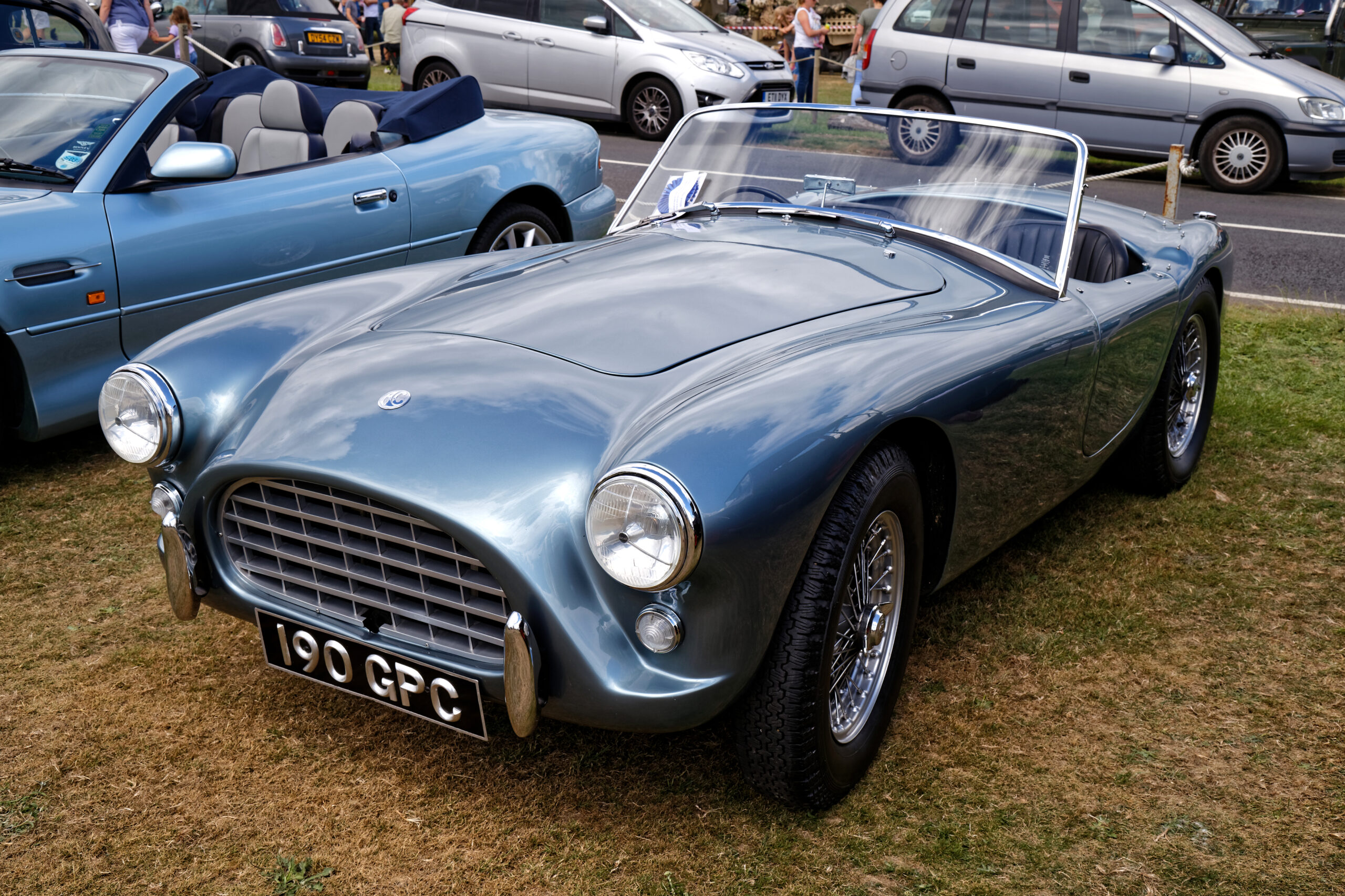
Classic AC Ace Roadster Evolution
The sports car that proved to be the inspiration for the much-loved AC Cobra.
The sports car that proved to be the inspiration for the much-loved AC Cobra was the AC Ace. The two-seater roadster was produced by AC Cars of Thames Ditton, UK between 1953 and 1963. The AC Ace would become one of the revered 1950s British sports cars.
From the outset, the AC Cars design team had a focus on weight reduction which led to the frame being constructed from an aluminium ladder-type tubular frame and alloy body.
From the outset, the AC Cars design team had a focus on weight reduction which led to the frame being constructed from an aluminium ladder-type tubular frame and alloy body. However, the performance of early models was hampered by the engine.
For the first three years, the AC Ace featured AC’s two-litre overhead cam straight-six engine, which produced 100 bhp and was reported to have a top speed of 103 mph. These engines are identified with an AE at the beginning of the chassis number. With an acceleration of 0-60 mph in 11.4 seconds, the engine failed to live up to the ‘sports car’ tag.
In 1956, AC turned to Bristol Cars for a more powerful engine. The two-litre straight-six engine produced 120 bhp and reached a top speed of 116 mph. Also, the 0-60 mph acceleration was over two seconds quicker at around nine seconds. The chassis numbers were changed accordingly to BE.
When Bristol Cars ceased production of their own engines in 1961, AC Cars turned to Ford. The introduction of a 2.6-litre straight-six Ford engine in 1961 (chassis number RS) gave greater speed and acceleration. The engine was adapted from the Ford Zephyr and there were reports of some models being tuned to 170 bhp. Acceleration from 0-60 mph was reduced to just 8.1 seconds and the top speed was now 130 mph. However, only 37 were made before AC and Cobra joined forces.
AC Cars entered the AC Ace in the 24 hours of Le Mans endurance race of 1957. Powered by the two-litre Bristol engine, drivers Ken Rudd and Peter Bolton guided the car to an impressive 10th place completing 281 laps.
In 1958, two AC Ace racing cars featured at Le Mans. AC Cars entered an AC Ace LM prototype, again featuring the Bristol two-litre engine. Racing driver Peter Bolton returned and was partnered by Richard ‘Dickie’ Stoop, finishing in eighth and completing 257 laps. A second AC Ace was entered by the AC Ace Ltd team and was driven by Hubert Patthey from Switzerland and Georges Berger from Belgium. Although they completed 255 laps, the team was not classified because of insufficient distance being covered.
British team Rudd Racing entered the only AC Ace Bristol in the 1959 24 hours of Le Mans. Brits Ted Whiteaway and John Turner finished seventh after completing 273 laps.
AC Cars had a long-standing relationship with SMITHS that extended to the AC Ace. In all, SMITHS designed and manufactured seven gauges which included:
SMITHS instruments for classic cars are still manufactured in the UK today at the Caerbont Automotive Instruments facility near Swansea in South Wales.
The AC Ace is widely regarded as one of the classic sports cars of the 1950s, sitting proudly alongside the MGA, Austin Healey 100, Triumph TR3A and the Jaguar XK120. Over ten years, approximately 689 AC Ace sports cars were produced. Good condition AC Ace sports cars are presently priced at between £170,000 and £230,000 (2019 – Hagerty Insurance) with limited-issue Ford-engine models attracting the higher prices.
Further information on SMITHS instrumentation is available on our website in the Cobra section, or to discuss a specific requirement please contact us on:
Via the contact form on our website
Email: [email protected]
Phone: +44 (0) 1639 732200